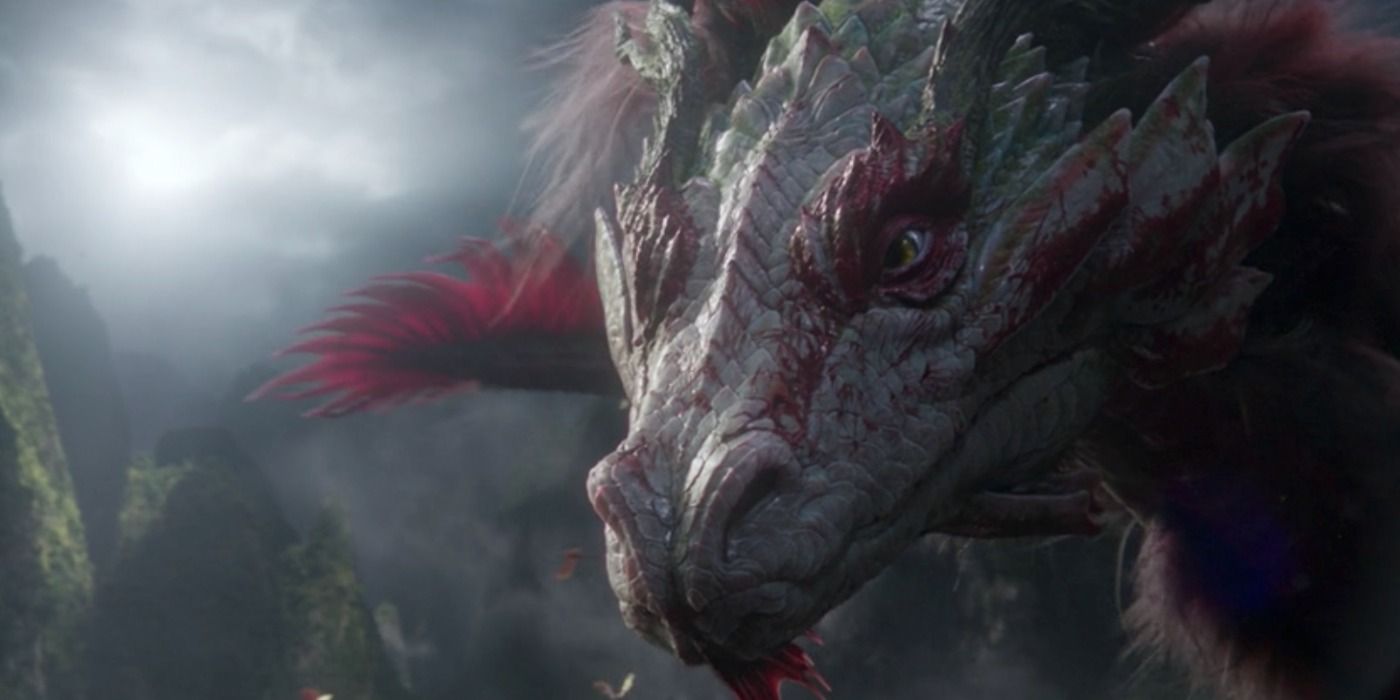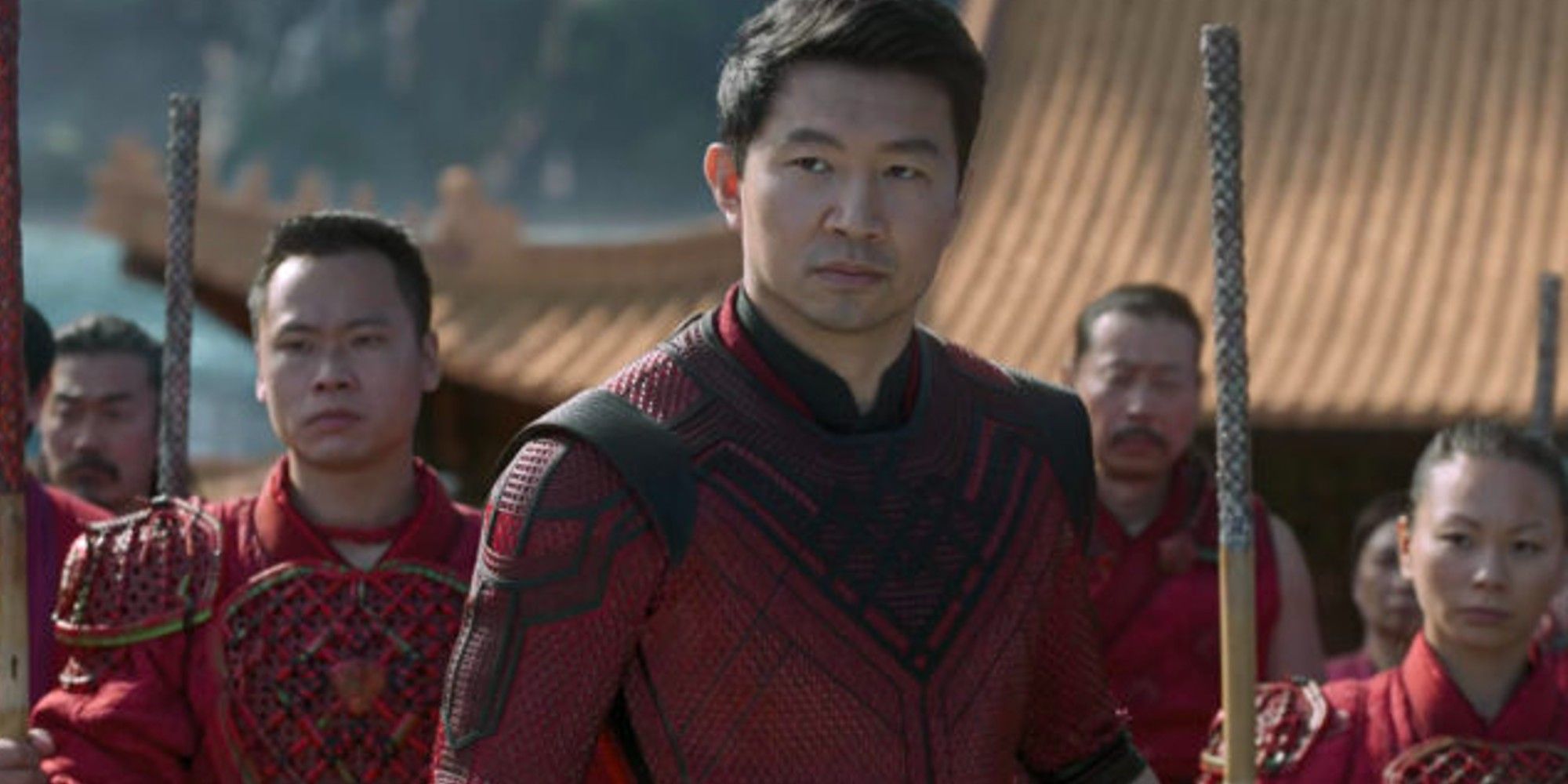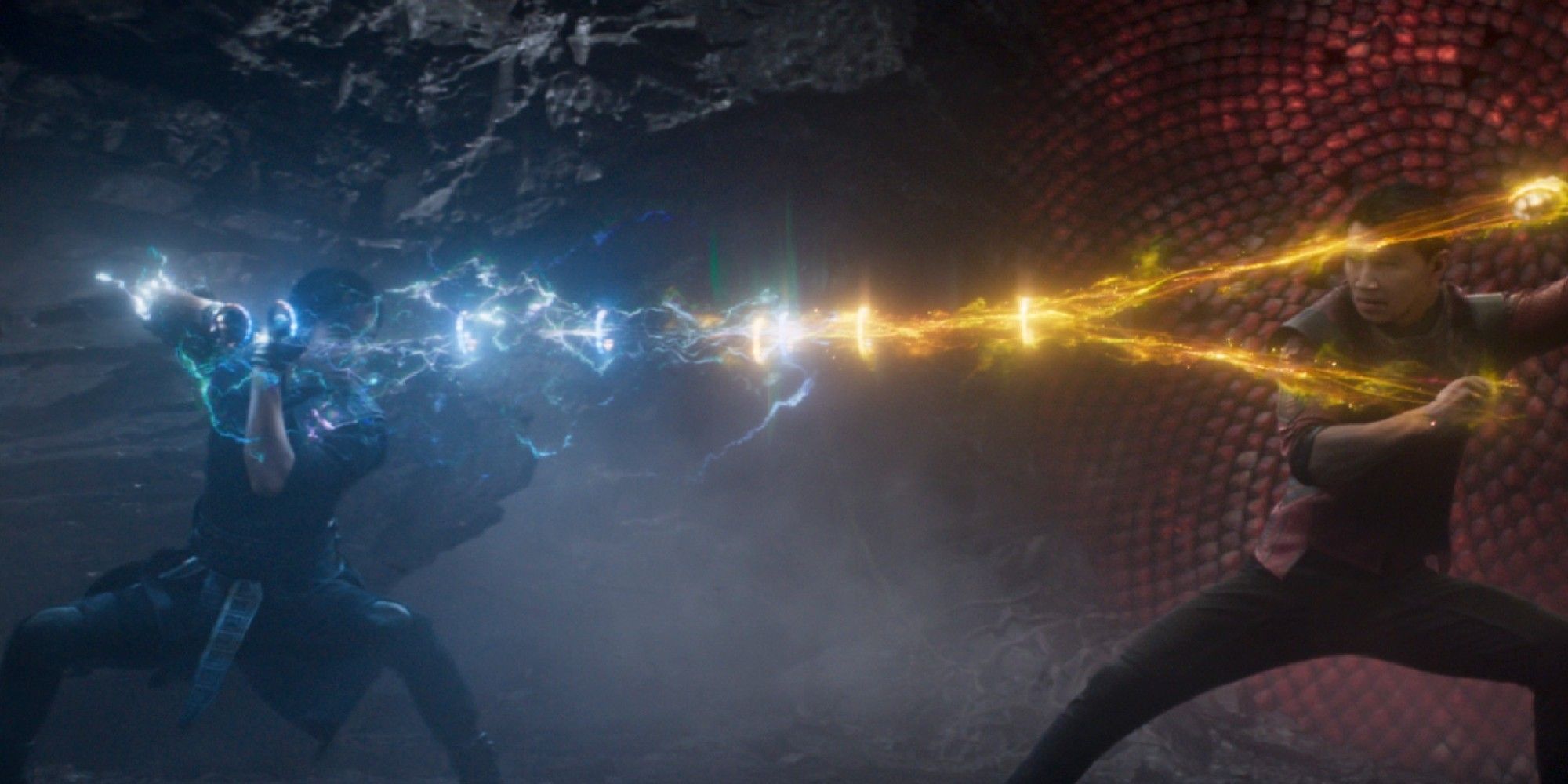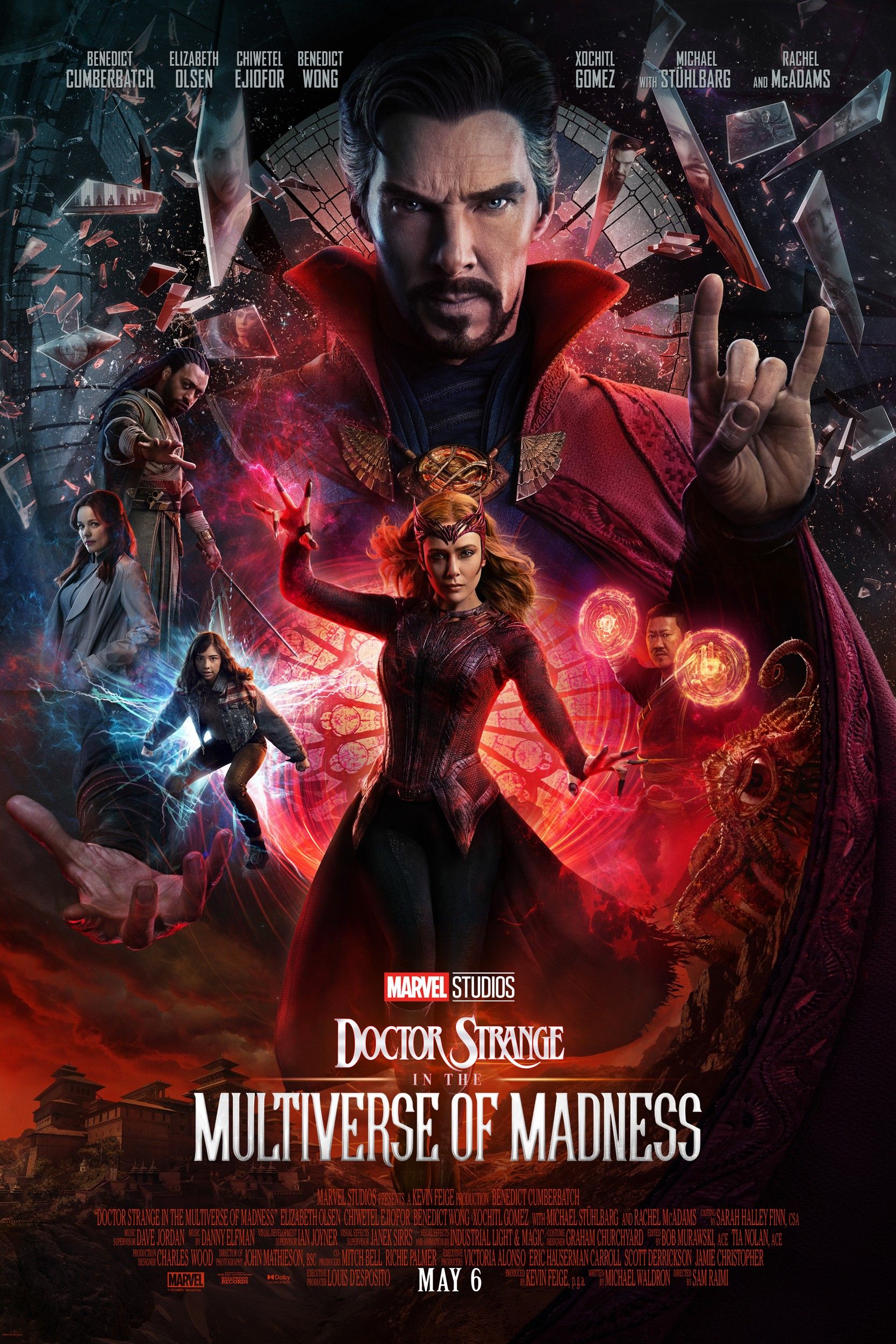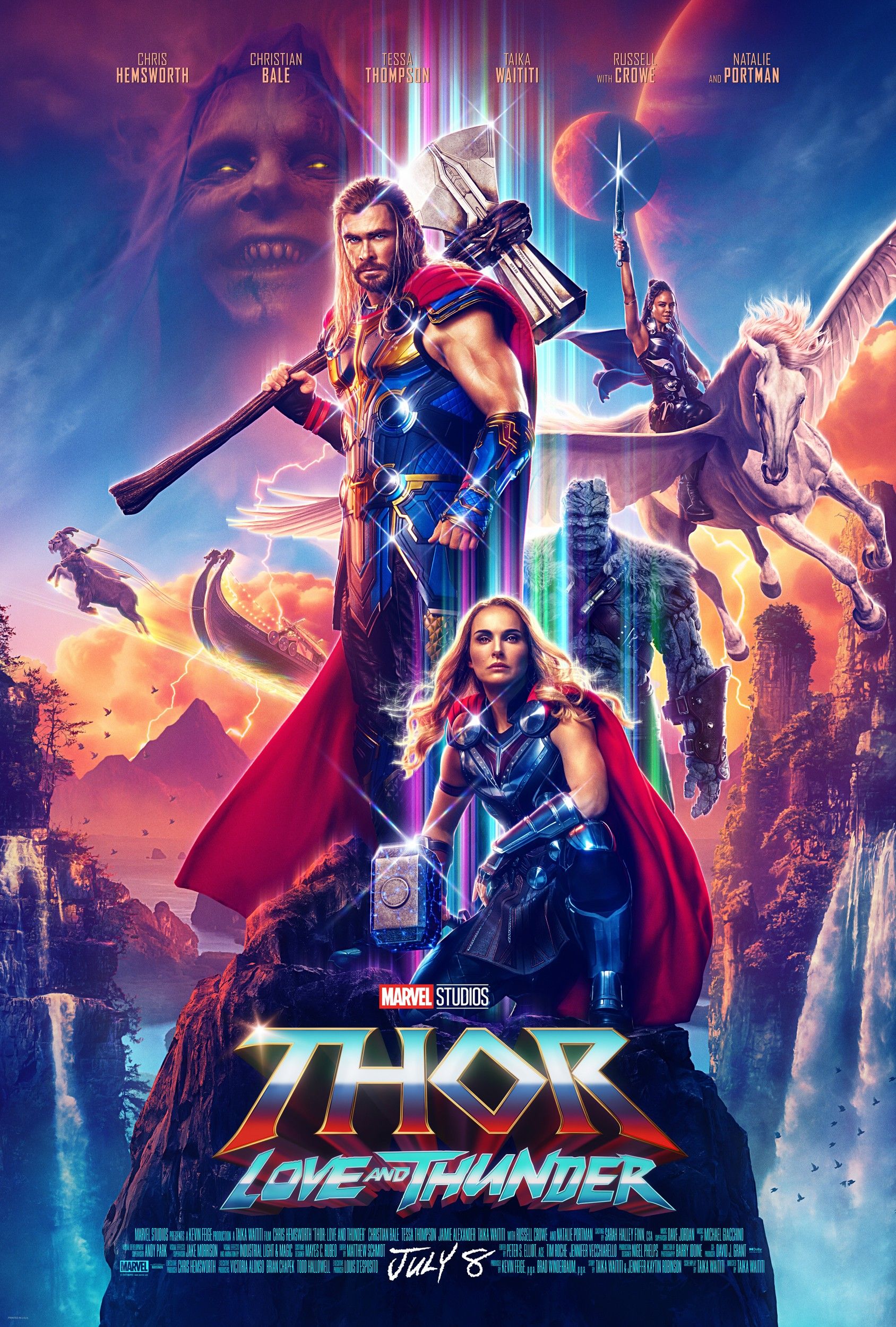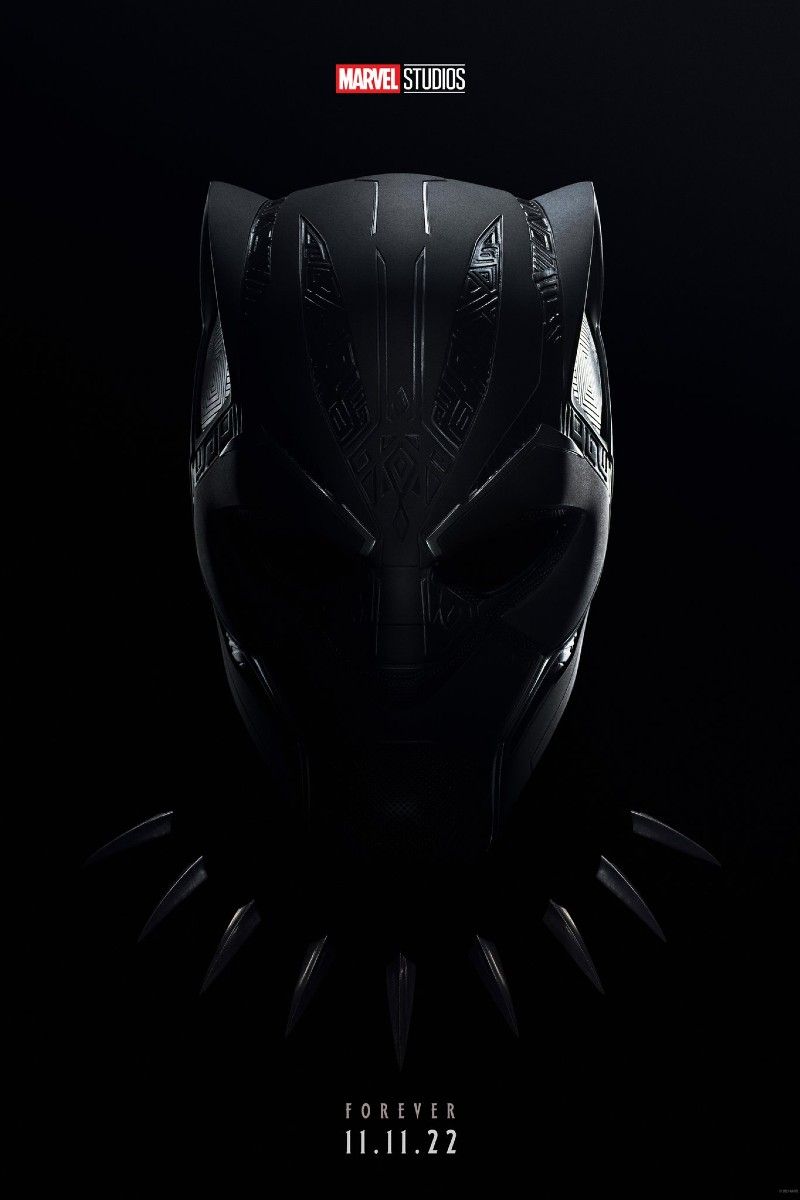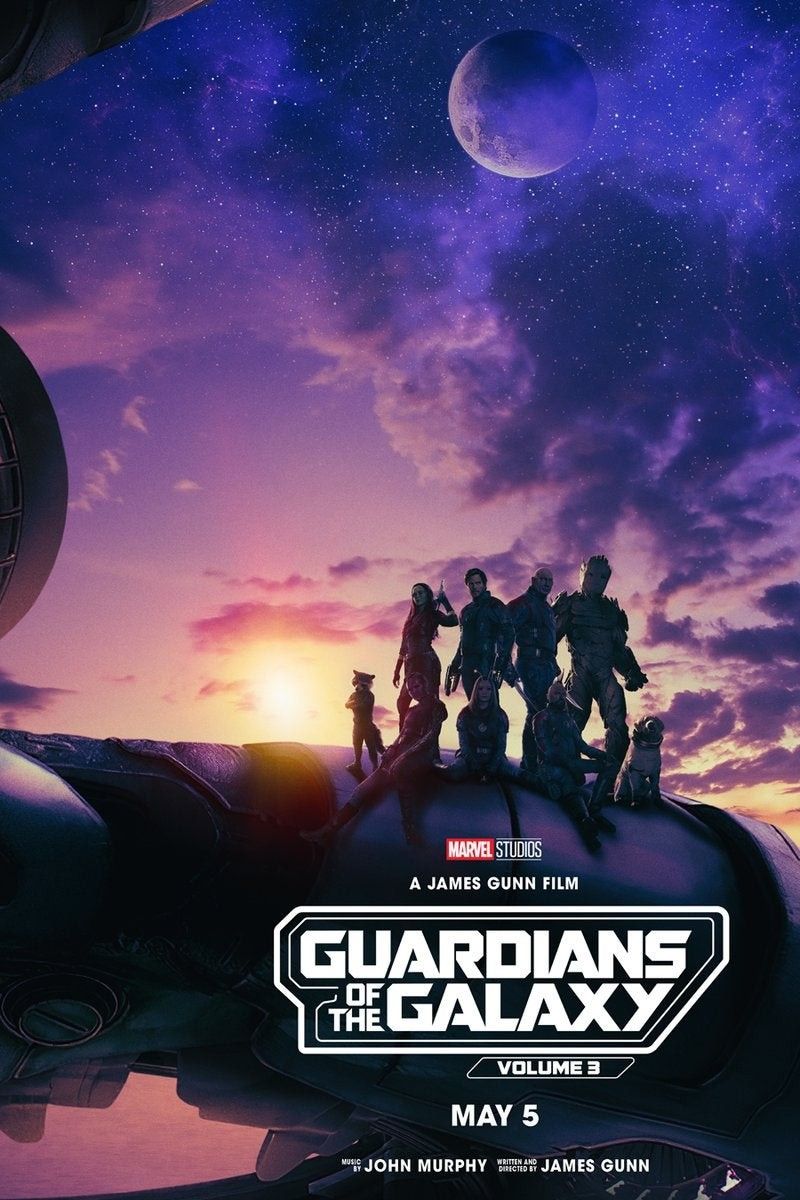Shang-Chi & the Legend of the Ten Rings has earned an Oscar nomination for its visual effects. Every Marvel movie features spectacular visual effects, and Shang-Chi was no exception. Featuring actors like Simu Liu and Tony Leung, the film started off with more grounded action before heading to the enchanted world of Ta-Lo.
A deep cut in Marvel Comics lore, the mystical world of Ta-Lo is traditionally viewed as a pocket dimension - one aligned with Chinese folklore, home to countless mythical creatures such as the qilin. In Shang-Chi, the near-immortal Wenwu believed Ta-Lo to be holding the secret to resurrecting his wife; in reality he'd been tricked into releasing a creature called the Dweller-In-Darkness. This led to a battle like nothing seen in the MCU to date, as the Dweller-In-Darkness battled against a powerful water dragon, with the help of Shang-Chi, his sister Xialing, and a well-timed arrow from Shang-Chi's friend Katy.
Many of the effects in the third act were created by WETA FX, and Screen Rant had an opportunity to speak to their VFX Supervisor Sean Walker after the Oscars. He discussed the Dweller-In-Darkness itself, the Great Protector, and some of the remarkable energy effects in Shang-Chi & the Legend of the Ten Rings.
Screen Rant: So first of all, congratulations on the nomination. Much deserved! How did you guys celebrate?
Sean Walker: For us in New Zealand, the Oscar nominations were announced at 2.30 in the morning, so I tried to go to bed - couldn't quite get to sleep that night, then decided to stay up until 2.30, watch the nominations, and then was so amped after the announcement that I didn't even go back to sleep. First thing in the morning, everyone celebrated with a champagne breakfast, it was pretty good.
Moving to the special effects, we'll start off by focusing in on the Dweller-In-Darkness, who sounded quite a considerable piece of work for WETA FX. Could you tell us a little about how you put the Dweller-In-Darkness together?
Sean Walker: Absolutely. So, the Dweller-In-Darkness - initially we called him the Beast, so if I refer to him as the Beast it was just his original name. He was a Hell of a creature, multiple tentacles - nine tentacles that are its large primary ones, but then it also has the ability to flick out these little tiny ones. We knew it was going to interact with the characters, we couldn't have these tentacles that were five feet across wrapping Wenwu up - it would take up way too much screen-space. So we had these little ones that come out, and they're the ones you see wrapping around Wenwu and Shang-Chi and Xialing while trying to pull them apart. So it wasn't even just one major creature, we had all these other attributes to it.
He was the biggest creature, I think, that WETA FX's built so far, built with 128 million polygons, which is pretty huge for us; he was so big that we couldn't actually animate him all in one go, we had to approach it in a manner that separated the whole thing into different - what we called "costume sets." Normally we would have different costumes for characters, combine them all, and run our character simulations off those full costume sets, but because he was so big we actually animated off all those individual costume sets. So we'd start with the main bulk of the body, animate the major forms, try and get them right, then we'd bring in some of the tentacles - he had six arms, so we had to bring those in separately as well, and treat it as a character made up of multiple characters.
Wow. You mentioned that he was initially called 'The Beast.' Was that your in-house name, or one Marvel was using for him?
Sean Walker: No, it was the name Marvel was using. I think at the time, Marvel was figuring out what they wanted to call it - it went through a few names, I think the original one was called 'The Horror.' And then it went to 'The Beast,' and then I think by the time they'd finished shooting they called it the Dweller-In-Darkness.
Now, the Soul-Stealers were particularly interesting. What inspired the design for the Soul-Stealers, and how did you integrate the CGI designs with the actual actors?
Sean Walker: So, the little demons - they weren't really inspired by anything other than various nightmares, really. There's a few mythical creatures throughout Shang-Chi that we looked at for reference, but these things were pretty much a combination of different types of evildoers. We kind of approached them with an ethereal look to start with, where they weren't actually corporeal, a bit misty. Then we decided to integrate that effect into the fact that traditional weapons couldn't harm them, so when the soldiers were shooting them their weapons just passed through. That's where we started to see that ethereal nature to them. To integrate them into the plates, and to interact them with the characters, it's just a whole lot of match-moving. There was a bit scary scene in the original plates coming into the original studio, because there were a good - I think, 80 or so extras in the background just swinging at anything, they had no idea what they were supposed to be looking at, they were just going after everything in the sky. We were just, 'Oh my God, we have to put a demon in front of every single one of these people.' So it was a little bit overwhelming to see them at the beginning! So, yeah, every single person that we had an interaction with, we had to hand-match-move every single one of those characters in the plates, so they could interact with a demon.
That does sound like a massive piece of work.
Sean Walker: It was, yeah, it was just one of those moments where they kind of announce it, and - the good thing was, there were a few sort of bonuses. We were having to match-move anyway to replace a lot of the characters with digital versions of them, to remove the sunlight from Australia that was baked into a lot of the plates. Then there was a call made about halfway through the production that they would like all the weapons to glow, that was another moment. So we just got the team to work hard for a couple of months.
Good grief, so literally halfway through they decided on the glowing weapons?
Sean Walker: Yeah, it was one of those moments where I think Marvel's VFX Supervisor, on their end, was in a studio review, and someone in the crowd goes, 'Wouldn't it be cool if all the weapons glowed with magical energy going through it?' And he was, like, 'Okay, we can do that.'
Ironically, I did want to ask - how did you design the magical effects around those weapons? How did you put that together?
Sean Walker: So we started with a little bit of concept, a motion concept, it's all done in 2D, we had one of our team whip up some energy flowing through it and animated it so we could get a buy-off on it. We took all her hard work and added it to our shading technique, so we had literal geometric veins going through all the weapons so they would glow from the inside.
Did you reference any other MCU movies, say Doctor Strange or anything, when you were designing those, or did you just have free rein?
Sean Walker: So this is the tricky thing about having so many Marvel movies. We had a lot of them in-house, so we work on a lot of Marvel movies at the same time, so pretty much all of us are in constant touch with one another to make sure we're not stepping on each other's toes, that the designs aren't exactly the same as someone else's. So, we wanted to make sure that none of our effects looked anything like the Eternals' effects. So we had free rein, outside of stepping on someone else's toes.
One of the things I absolutely loved in Shang-Chi was when we visited Ta-Lo, and saw all these beautiful mythical creatures from Chinese folklore. How did you create those?
Sean Walker: Those were actually all done by a vendor called Trickster, and they went through a whole lot of Chinese mythology - you had the nine-tailed foxes, the hunduns, Morris, the qilins... They went through a whole lot of those, wanted to make sure they were sensitive, and constantly looking at the cultural references to make sure they were accurate.
What would you say was your favorite of the creatures that were designed for Shang-Chi?
Sean Walker: I love the foo dogs, because we worked on them. Within this movie there are a lot of shared assets, Trickster took on the foo dogs as well and used our assets to animate their sequences; there was a little bit of the opposite as well, they built Morris and we started to use Morris a little bit, but he was cut out of one of the major action beats we were going to use in the very end. Don't know if you've seen it, maybe in the Disney+ extra scenes, Sir Ben Kingsley rides an elephant-size Morris into battle, waving a sword, screaming Shakespeare. So there's a lot of shared assets, for me the foo dogs.
I understand the water effects were a particular highlight from a VFX perspective. What made those effects so challenging, and how did you pull it off?
Sean Walker: So, water traditionally is a tricky element to work with in visual effects. It's extraordinarily heavy to simulate, especially at that scale where you're looking at oceans as opposed to a glass of water, for example. For us, the trickiest part was that it was no longer really in the realm of reality as far as the motion goes. Normally we're pretty used to doing realistic simulations of water, characters interacting with it. This is the first time we've really done water in a way that needed to be animated as if it was a character really, so we had the giant spirals the dragon manipulated, and used as a weapon or as a defensive weapon to cage the Dweller-In-Darkness. So the trickiest part of that was approaching it in a different way, we had our traditional technique which we used to simulate the face of the water, but we fell back on some of our older techniques to simulate the surface of the spirals that came around. Then we used our latest technology on all the things that had the water feel, so we had spindrift, which is where on oceans and you see waves break with the spray come off the top, we had the foam, additional rippling done as a separate simulation, tons and tons of layers and details added as we go through and built up these shots.
These sound pretty complex, how did you integrate them with the Great Protector as well, who was interacting with them?
Sean Walker: Yeah, there are two ways to approach that. We've got a new solver called Loki that allows us to simulate pretty much everything at the same time. It's pretty heavy, so we used it for a couple of instances, it means you can simulate the membranes of the Dweller's wings alongside the water surface itself. For the most part, we did a bit of back-and-forth; animation would animate the Dweller-In-Darkness, we would simulate the water around the Beast, then we would also simulate the membranes after that.
With the Great Protector, you put an awful lot into creating this beautiful textured skin. How did you do that?
Sean Walker: So, the Great Protector - it's the first time I've ever really seen a dragon of this scale, with this type of... scales. And texturing and shadows. Mostly, whenever you see dragons these days, Drogon in Game of Thrones, Smaug - they all have a traditional Western look, very dirty, angry, spiked, dark and brown, and so we wanted something a lot more beautiful. It's a water dragon, it had to have a lot of aspects that led you back to water. So she's ancient, with cracking throughout her scales, moss because she's slept on the lake bed for thousands of years, and so we approached it like that, so we could tell that story through the image. Then her shading looked at albino lizards for reference, making sure she felt alive, translucent scales so you can see all the blood underneath through the body, just underneath the scales.
Moving on to the Ten Rings themselves, could you tell us a little about how you came up with the energy effects associated with them?
Sean Walker: Absolutely. The energy effects went through a whole wide gamut of changes throughout the production. They started out really elaborate and powerful, a bit over-the-top. They were really something intense to begin with, then we noticed that Wenwu - Tony Leung's performance - was so understated, such a calm and realistic approach to acting, that the Rings and the energy were way over-the-top, deviated too much from the performance. So they scaled it way back down to almost nothing, as though they affected the atmosphere more than anything else. But then, after they had a few screenings, they decided they were a little bit too subtle, they should be powerful, and so we decided to go through another conceptual phase where we amped them up.
For Wenwu, we wanted to reflect his energy and his fighting style. We had a lot more aggressive shapes, a little bit more like lightning, hit the cooler color tones to reflect his anger and resentment towards the world that had taken his wife away. For Shang-Chi, we wanted to hearken back to his mother's color palette - you know, when we see his mom, she's wearing a lot of green and gold, we wanted to feel like he was channeling his mom's energy. We gave him a much warmer color palette, approached his look as calm and smooth effect, rather than a weapon he used the Rings as much more of an extension of his body, using them defensively, as an aid to defend himself with the Rings as a shield, to get around, rather than pounding on people. It's a different approach, and a different effect that comes along with it.
When we last spoke, you mentioned something about modeling the Rings with the elements as reference points. Could you explain a little about what you meant with that?
Sean Walker: Oh, yes. For the Rings, and the interactive elements that are in all the elements... That's back to the original brief, we wanted to make sure the Rings were visible not just as points in space but in their effect on the environment, so flying through the atmosphere you can see the fog shift along with the Rings; when they are in the battle at the very beginning, between Wenwu and his eventual wife, she's affecting the environment herself with her own Chi, and we wanted the beautiful environmental effects as well as the effects that follow the Rings themselves.

